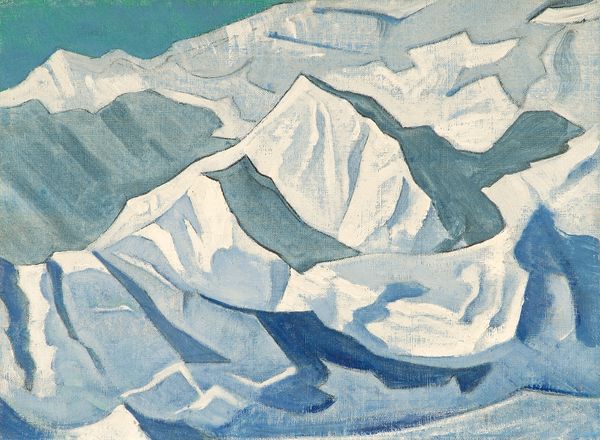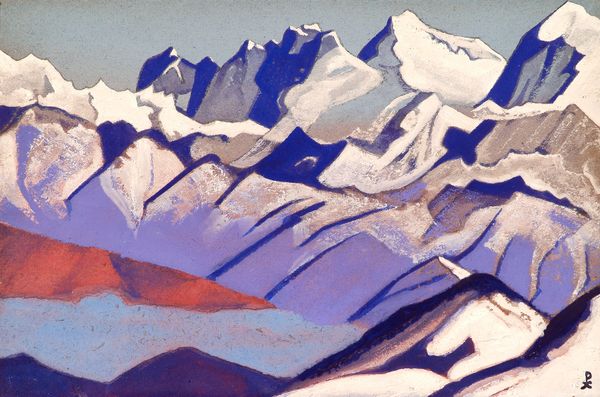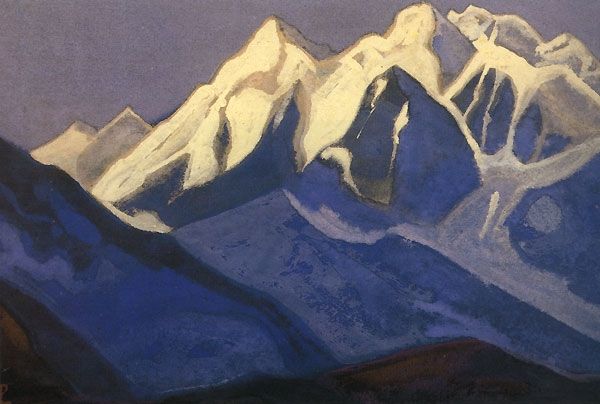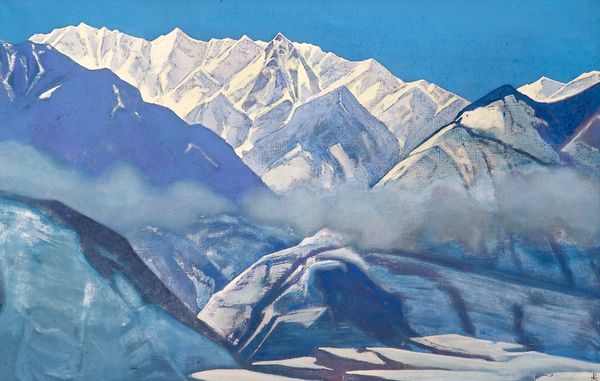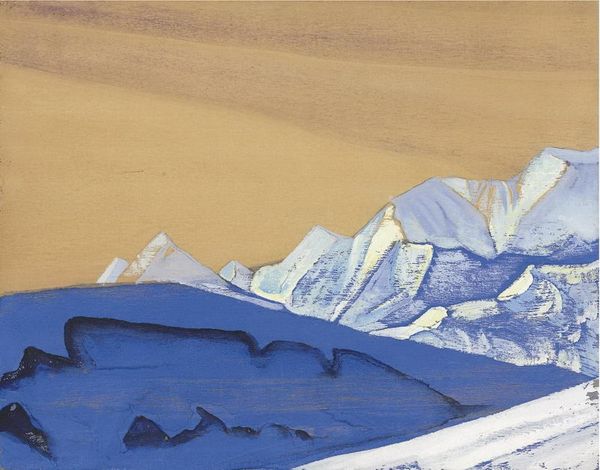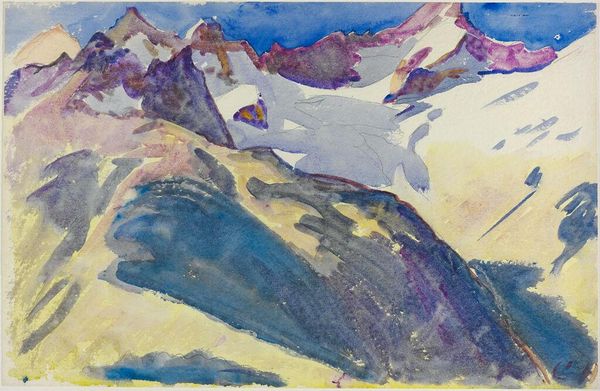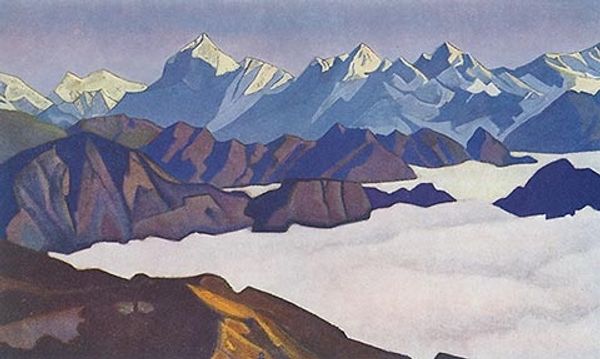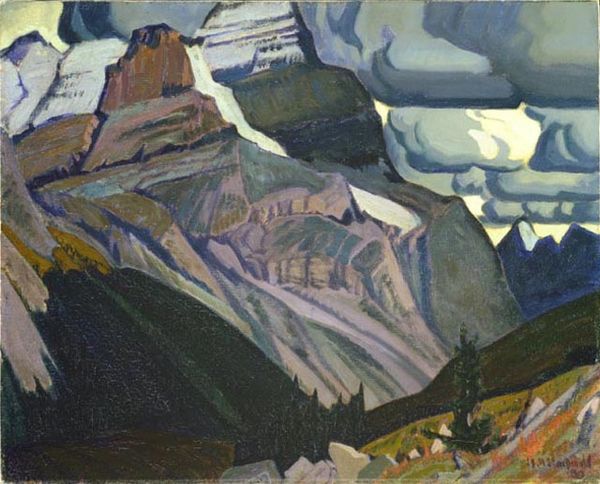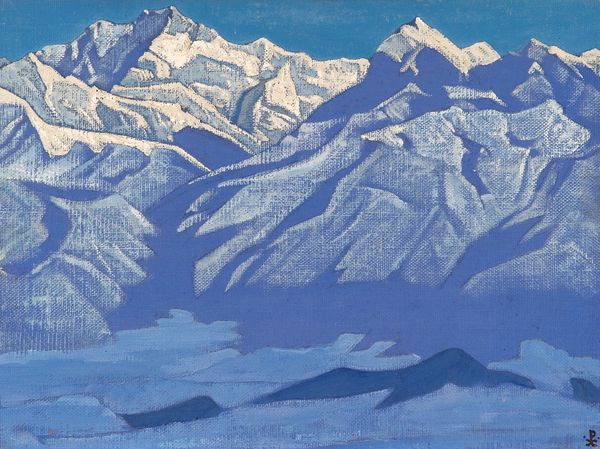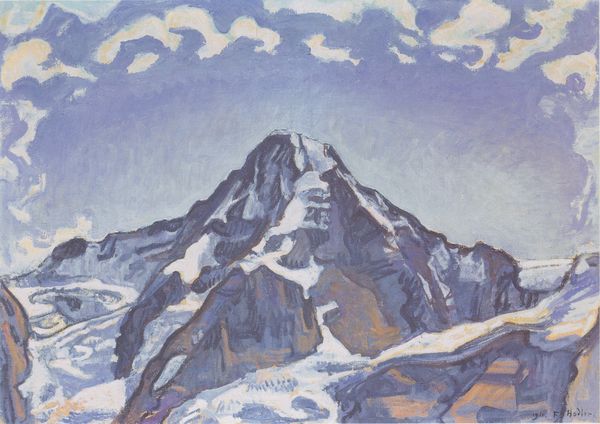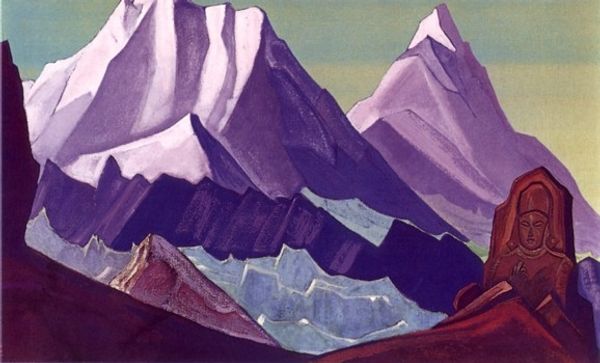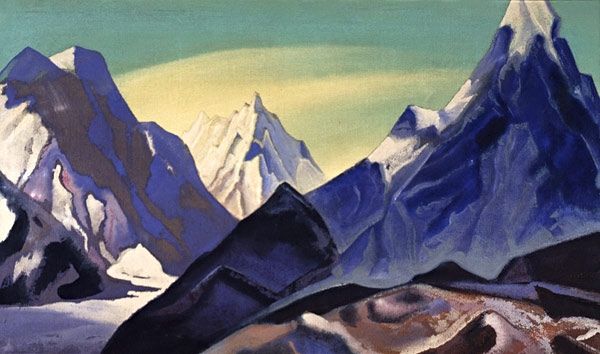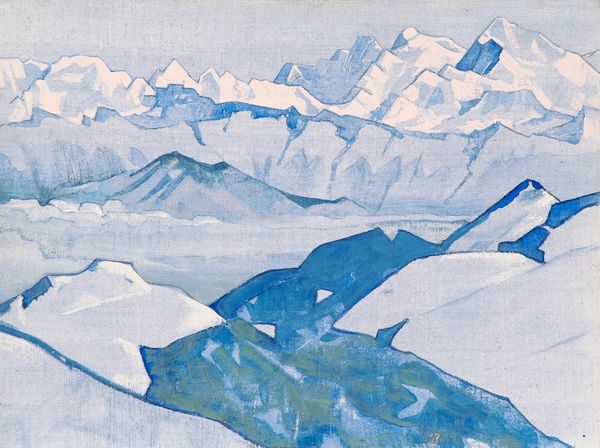
Red horses 1925
0:00
0:00
nicholasroerich
Nizhny Novgorod State Museum of Fine Arts , Nizhny Novgorod, Russia
Copyright: Public domain
Curator: "Red Horses," executed in tempera and oil-paint around 1925, beckons us into the vibrant vision of Nicholas Roerich. The piece resides currently at the Nizhny Novgorod State Museum of Fine Arts in Russia. Editor: The intensity of the colors is what strikes me immediately. That deep cerulean sky and the sharp angles of the mountains really draw the eye upwards, then the warmth of the horses…it’s quite striking. Curator: Roerich, deeply invested in Asian art and thought, particularly Tibetan Buddhism, often infused his landscapes with symbolism tied to peace, spiritual quests, and the power of nature. I believe "Red Horses" serves as a potent visual metaphor. Horses are recurring figures for Roerich who often used it as a symbol for the agency and freedom to choose one's own direction. Editor: The way Roerich uses geometric forms is captivating, don't you think? Those rigid, almost crystalline facets in the mountains. How the texture contrast makes each part more pronounced. Curator: Absolutely. That deliberate stylization elevates it beyond a mere landscape, venturing into Expressionism. He’s actively reshaping the visible world to project an inner emotional landscape. It also gives Roerich's art a foot in Asian art style that often uses landscapes to express interior feelings and philosophical positions. Editor: And there's that interesting contrast between the grandeur of the mountains and the small figures of the red horses. The way their implied movement gives that static setting a palpable sense of latent power and activity. This makes them almost central despite the dominance of the orography. Curator: I agree. And given the historical period, just after the Russian Revolution, it might suggest revolutionary upheaval. Are these "Red Horses" a commentary on a country galloping towards an uncertain future? We must ask what do you see the symbolisms? To me it looks like he saw it coming with certainty and the inevitability that follows the establishment. The work might invite reflections about revolution, society, the old regimes versus the new society that's brewing at that moment in Russia. Editor: Whether political commentary or simply a brilliant manipulation of color and form, Roerich’s piece presents a powerful study of how shapes influence emotion, as well as meaning that lies deeper within. Curator: Roerich truly invites a deep exploration of history, society and subjective spirituality through vivid artistic means.
Comments
No comments
Be the first to comment and join the conversation on the ultimate creative platform.
